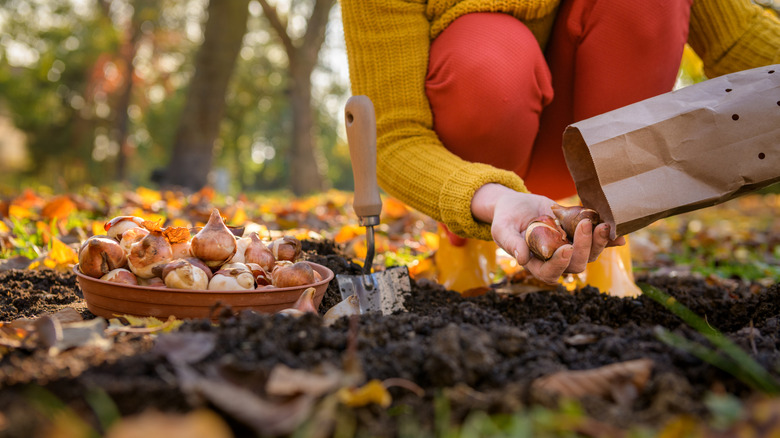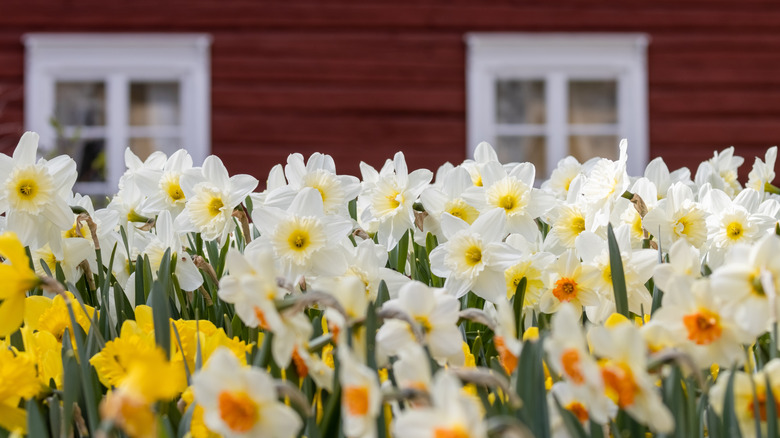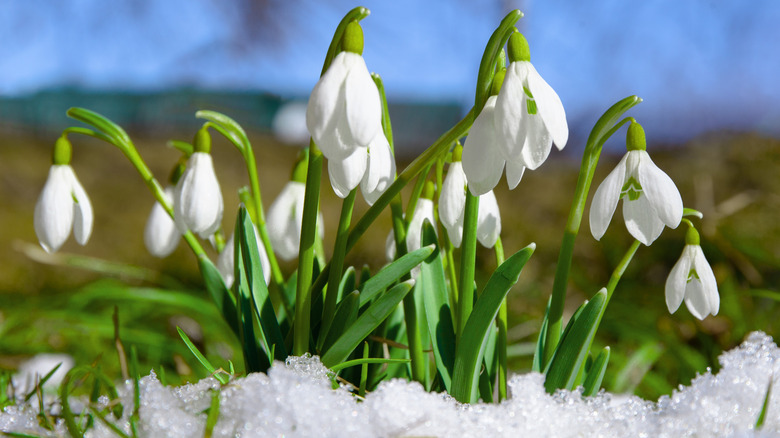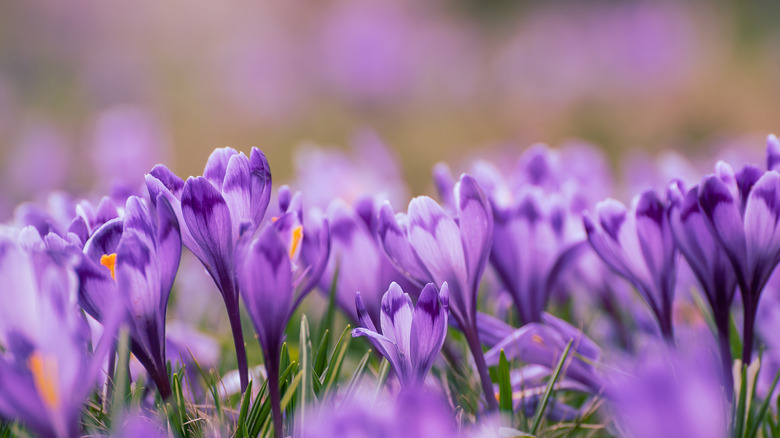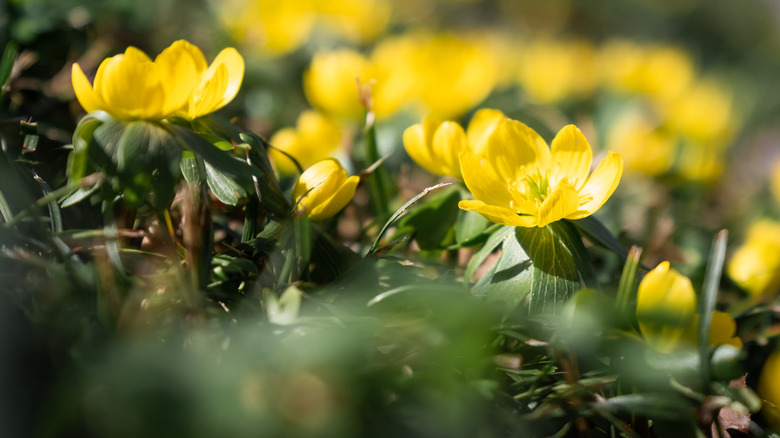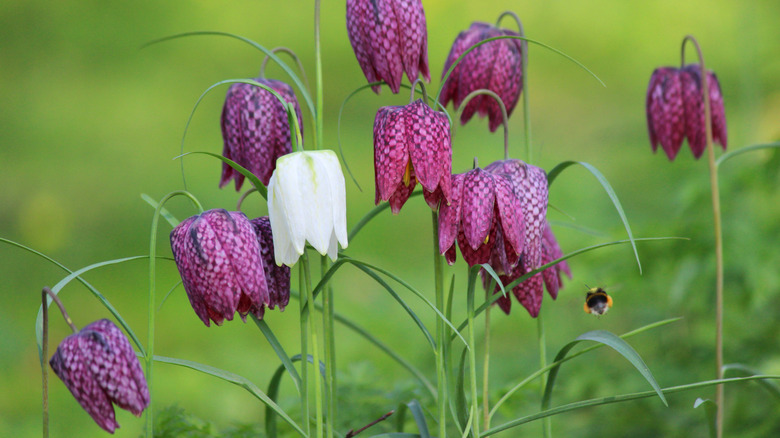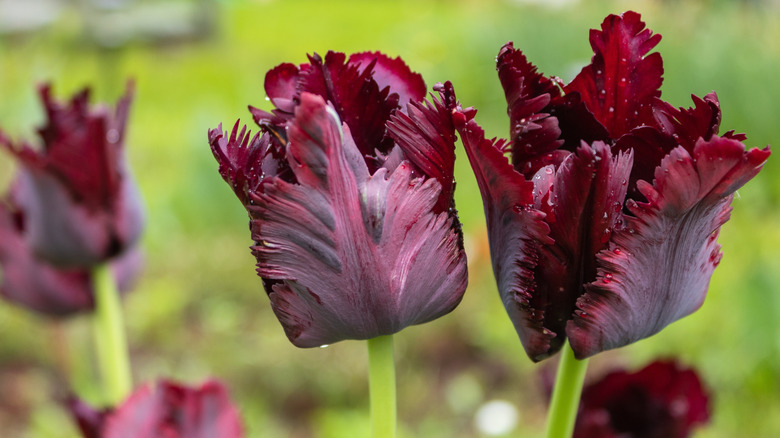Plant These 11 Bulbs In November For A Spring Garden Bursting With Color
Is there anyone more full of hope and faith than a gardener? After all, it is a leap of faith to plant fall bulbs in the chill of November for the dream of spring blooms. And yet every year this is what we do, dreaming of gardens full of tulips, daffodils, crocus, and snow drops peaking their heads above the soil with the first whispers of spring. There are many fall bulbs you can plant, even now, for a gorgeous spring flower garden.
November is the best time to plant spring flower bulbs. The soil is the perfect temperature, the weather isn't too nasty yet, and stores are having amazing sales on popular picks this time of year. Not to mention, squirrels aren't as desperate, so you might actually manage to keep them away from your freshly planted bulbs.
Spring flowering bulbs need just the right temperature to establish strong roots. The soil temperature should be at 60 degrees Fahrenheit or cooler. Spring bulbs also benefit from a long cooling period of up to 16 weeks to flower properly. Some of the most beautiful flowers in the spring are best sown this time of year — tulips, hyacinth, iris, and allium come to mind. So, gather your bulbs and get out in the garden — you still have time before the hurriedness of the holidays demands all of your attention.
Hyacinth
Hyacinths (Hyacinthus orientalis) come in an array of beautiful, springtime colors such as purple, pink, blue, and even yellow. They have small, trumpet-like flowers that cover a main stalk, and can grow 8 inches to 1 foot tall. Hyacinths are most known for their amazing scent. They grow well in USDA Hardiness Zones 4 through 8 in a location with full sun. It is important to note that hyacinth bulbs can cause skin irritation in some people, so it's best to use gloves when planting these bulbs in the fall.
Daffodil
The darling of spring, daffodils (Narcissus) have been in strong competition with tulips for the most popular spring flower since the 1800s. They are most well known for their trumpet-shaped blooms and their bright sunshiny yellow color (although they do come in other colors). They are best grown in zones 3 through 8, and they make a wonderful option for around the border of a garden. Plant in fall to initiate root growth for gorgeous blooms in spring.
Dutch iris
The Dutch iris (Iris x hollandica) is a variety of iris that grows from a bulb instead of a rhizome. This cultivar is an herbaceous perennial that enjoys full sun, well-drained soil, and thrives in zones 5 through 9. Gardeners should be aware that the Dutch iris is poisonous to cats, dogs, horses, and humans (if eaten). It is an extremely popular cut flower that is commonly used by florists for bouquets. The Dutch iris comes in a variety of beautiful colors, and its orchid-shaped blooms are sure to add elegance and beauty to any spring garden.
Ornamental onions
Ornamental onions (Alliums), commonly referred to as alliums, are a variety of onion plant grown for its beautiful, large blooms. Imagine a flower shaped like a snowball, but in shades of purple, red, white, pink, and even gold. These flowers are best suited to zones 4 through 9, planted during fall in well-drained soil and full sun. Be aware — these interesting flowers, depending on the variety, can grow up to 5 feet tall — perfect if you want to add some drama to your spring flower bed.
Snowdrops
Snowdrops (Galanthus nivalis) are small flowers that bloom at the earliest signs of spring, even when there is still snow on the ground (thus the name). They have milky-white blooms that droop from the stems. These little flowers only get to be about 6 inches in height. Snowdrops do best in zones 3 to 7. They enjoy full sun to partial shade and prefer well-drained soil, but they can stand a little moisture every now and then. Snowdrops are one of the flowers you should plant in fall if you find yourself anxious for signs of spring every year.
Crocus
The crocus (Crocus vernus) is one of the most cheerful signs that winter is coming to an end. They bloom in a variety of colors and are a wonderful treat for pollinators to help them recover from their winter slumber. Crocuses are bright, cheerful, and look beautiful when planted near snowdrops in the fall. They do best in zones 3 through 8, and like many plants on this list, they flourish in full sun.
Glory-of-the-snow
Glory-of-the-snow (Scilla luciliae) is another spring bulb that has the habit of blooming even when there is snow on the ground. This flower can offer a lovely pale blue or pink contrast against winter's white canvas with its star-shaped flowers. They thrive in full sun in zones 3 through 8, and should be planted during the fall to provide a period of cold stratification. Glory-of-the-snow would be lovely planted near daffodils or crocus in a spring garden.
Winter aconite
While winter aconite (Eranthis hyemalis) is a lovely yellow spring blooming flower, it is one to avoid if you have pets or small children, it is highly poisonous if eaten. Winter aconite is the perfect flower for along the border of a spring garden in zones 3 to 7. If you want to add a touch of yellow and something that's easy to maintain to your spring flower bed, planting winter aconite in fall is a wonderful choice.
Anemone
Anemone are another wonderful example of popular cut flowers, and they make beautiful spring bouquets when planted in fall. Their large blooms come in an amazing variety of colors, you're sure to find a variety that you love. Their hardiness is species dependent — with zones 4 through 8 (blanda anemones) and zones 8 through 10 (Italian anemones) being best. They are one of the taller flowers on our list and would make a great partner for your Dutch iris plants in a cut flower garden.
Snake's head fritillary
Snake's head fritillary (Fritillaria meleagris) are one flower that is sure to be a conversation piece. It's also known as a checkered lily for the interesting, checkered pattern on its blooms. If you're looking to add a bit of whimsy to your garden, this is the flower for you. You can safely plant fritillaries in your garden during fall if you live in zones 3 through 8. Like many flowers on this list, fritillaries enjoy full sun, but they aren't opposed to a little wet soil.
Tulips
Tulips (Tulipa) are the quintessential spring flower, and for good reason. Tulips most assuredly have the widest range of styles and colors of the spring-blooming bulbs. They are also one of the easiest flowers to grow. If you are looking for something a little more interesting than the average tulip, you could always plant a stunning double-petaled 'Columbus', a 'Blue Spectacle', or a pink, green-tinged 'China Town' during fall. Tulips perform best in zones 3 through 8.
